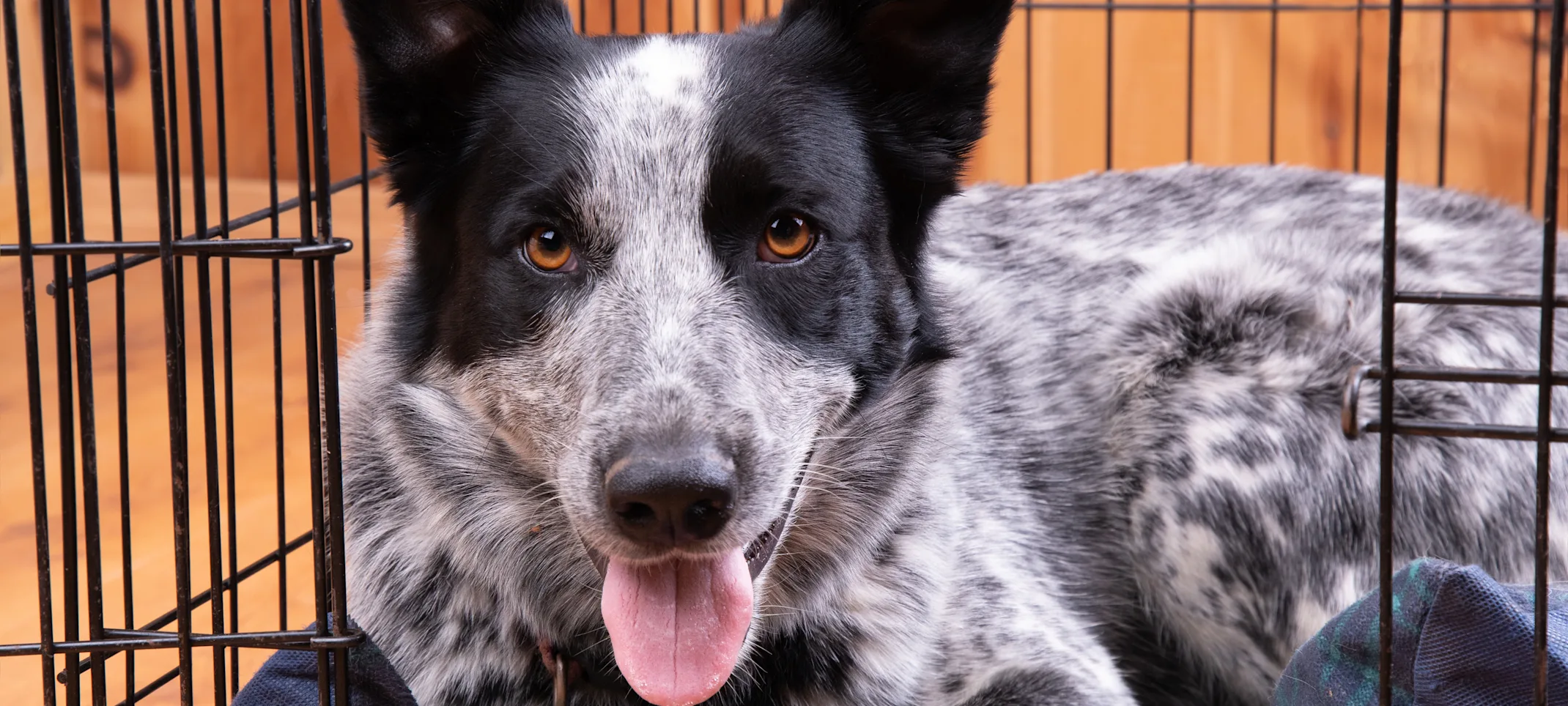Animal Hospital of Waynesville
Crate Training for Dogs

Crate training your animal is a great way to bring out your animal’s natural instinct when providing a “den,” or crate, for your dog. A den can be known as a home, a place to sleep, and also a refuge from danger for your four-legged friend. After your pet gets adjusted to its crate, it will begin to refer to it as a comfortable and safe place where he knows it is secure. Crate training is not only beneficial to puppies but to all dogs of all ages. However, there are many different things to consider when choosing a crate and also using it the proper way
Selecting a Proper Crate
There are many different types of crates available for purchase at pet supply stores:
Plastic crates (kennels)
Collapsible rigid frame
Collapsible metal frame
It is very important to keep in mind the size of your pet when purchasing them a home. You want to be sure there is enough room for them to stand up and move around in it, however providing too much room can cause problems such as urinating in the crate. If your dog is still in the process of growing, it might be wise to purchase a crate that would suit their expected adult size that also allows you to block off room as your pet grows.
Crate Training Process
Tip #1: Your dog should ALWAYS associate its crate with being something pleasant. Tip #2: Crate training is something that should NEVER be rushed. Tip #3: Never let your dog out of the crate when it is behaving badly. You want them to associate good behavior with being able to get out.
As stated in the beginner tip above, crate training is something that should take time depending on your dog’s age, temperament, and past experiences. Each dog is different and will adjust to crate training in their own way.
Step 1 – Introduce your dog to its crate Step 2 – Feed your animal’s meals in its crate Step 3 – Lengthen the timing periods that your animal is in its crate Step 4 – Crate your pet when you leave and also at night
Things NOT To Do
Although crate training can be very beneficial and rewarding to you and your pet, there are many things you must NOT do:
Never use your dog’s crate as a punishment. When you associate your pet’s crate as a negative environment it makes them not want to ever enter it.
Do not leave your dog in its crate for long periods at a time. If you leave your pet in a crate for long periods of time without them getting exercise, it could make them very anxious and also depressed.
Puppies under the age of six months should never stay in the crate longer than 3-4 hours at a time without being let outside. Puppies are unable to control their bladders and bowels for long periods of time, and they physically do not know how to hold it yet.
Crate your pet until you can fully trust them to be out and about without them destroying your house.
If your animal gets to the point where you feel that you can let them out to voluntarily roam around the house while you are gone (without chewing something up or destroying things), then it may be time to consider changing your pet’s routine.

